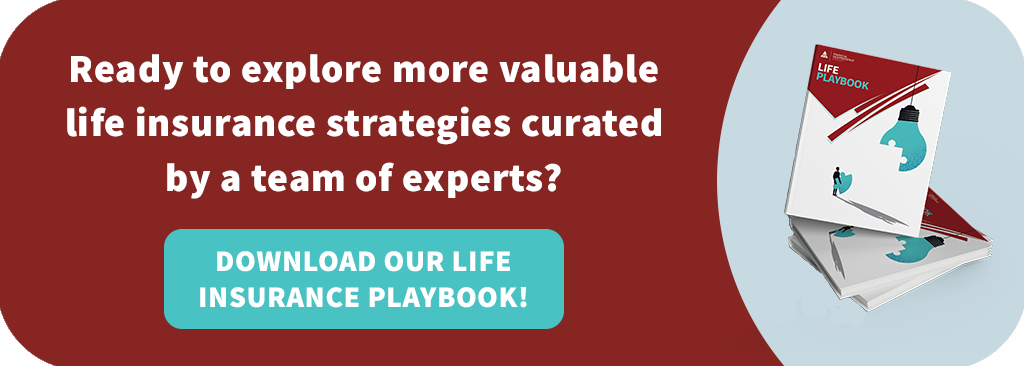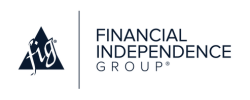Updated May 8, 2024, at 4:25 PM
A recent study asked consumers to rate the importance of various factors when purchasing life insurance. Having a product that is “easy to understand” received top ranking.
So how do we make life insurance easier to understand?
A key improvement would be to underwrite a schedule of net insurance amounts rather than a face amount. This allows fairly predictable cost disclosure and simpler risk management by not increasing the net amount at risk (NAR) when the account value is less than planned. It also allows the protection portion of the policy to be tailored to funding options and the transition into retirement.
Tailored Life Insurance
The best example I have found of this tailored concept as term insurance is Protective Life’s Custom Choice product. It is built on a universal life (UL) chassis to provide a low-cost term benefit. The benefit is level for 10-30 years followed by a decreasing benefit that keeps the premium level well into older ages. The key to making the policy easier to understand is that there is a clear and practical cost with a transition plan after the level benefit period.
The Protective product also has conversion options to cash value life insurance such as indexed universal life (IUL). The way to leverage an IUL policy is to move toward maximum funding to provide increasing cash values and lifetime guarantees.
The next step would be to track premiums paid to maximum funding in order to automatically adjust the policy to keep it in force and/or maximize long-term benefits. Life insurance will not be easy to understand until we manage “perm” insurance to be truly permanent with clear cost disclosure and a path for adjusting the policy. Even with secondary guarantees, adjustments to benefits will often be needed to keep the internal supporting account growing and make the policy permanent.
Premium Adjustments
One approach to keep universal life permanent is with policy services that adjust the needed premium. For example, John Hancock has a policy service that will solve each year for the premium to keep the policy on track based changes to current assumptions. This process keeps the pattern of net insurance amounts fairly close to what was originally illustrated at policy issue. If interest rates go down, the premium goes up somewhat. It is easier to make a small adjustment now rather than adding large premiums later.
Types of Life Insurance and Key Concepts
The rest of this article shows how the concept of decreasing net insurance amounts in retirement fits with various types of life insurance. Depending on funding of the account value, this concept typically leads to eventual increases and/or decreases in the total death benefit. While these death benefit changes may not seem easier to understand compared to selling or servicing a level benefit, these changes are essential to balancing the policy and stabilizing the costs. These adjustments are shock absorbers along a paved, but imperfect road.
#1: Term Life Insurance
Term products with a level benefit have a simple cost disclosure during the level premium period that is typically for 10-30 years. The challenge comes after this period when the policy goes to an annual term rate (ART) that can be 10-20 times the prior premium. These ART premiums may have been reviewed in illustrations and policy issue documents, but the policy owner typically does not grasp the dilemma these ART premiums pose.
Most policy owners drop a term policy when it goes to the high ART rates. Some keep the policies if the insured is in poor health and does not qualify for better rates. This leads to a higher risk pool of insureds that in a circular fashion requires the high ART premiums. For insureds who would qualify for a new policy at a favorable rating yet pay the ART premiums, the insurance company insurance company tends to have higher profits. These policy owners, however, are typically not making wise use of their dollars. The problem is the dramatic change due to either “jump to the moon” premiums or benefits “falling off a cliff” in a policy lapse. There is no practical financial planning model that supports such dramatic changes in costs or coverage.
#2: Whole Life Insurance
The traditional whole life structure is composed of a combination of increasing cash value and decreasing net insurance amounts for both the base policy and paid-up additions (PUAs). This transition provides stability. The premium disclosure is simple as a fixed premium guarantees the benefit for life. What’s difficult is seeing how the cost and credit components work and how to compare them to term plus investment alternatives. The comparisons are often apples to oranges because of big differences in the patterns of the net insurance amounts.
#3: Universal Life Insurance and Flexible Options
Since the early 1980s the market has demanded and supplied greater flexibility in premium, benefit and crediting options. UL emerged to provide flexibility and a variety of benefit options and credit types – fixed, variable, secondary guarantees and indexed. The problem has been with the instability of the net insurance amounts particularly for underfunded policies in or near retirement. The first ULs were sold about 35 years ago and there is an increasing pool of policy owners who have policies falling apart. They thought they had “perm”, but in effect have had extended term insurance with the net insurance amounts and costs increasing as the cash value decreases.
Over these decades, whole life products were also changed to be more flexible with combinations of term riders and PUAs, and new benefit and credit options. These changes have also made the products more complex and term riders can become more costly when dividends are less than projected.
Illustrations and Instability of Costs
Illustrations of cash value life insurance, particularly for UL, are a standard tool in sales and support since the early 1980s. They are intended to show how the policy works in different scenarios, but cannot predict actual policy performance. The key factor that changes is the interest or credit rates. The cost of insurance rates have been fairly predictable, but the costs of insurance deducted from the policy values are not.
Costs vary widely because the net insurance amounts are not stable when forcing a level death benefit with changing account values. Or policies with level net insurance amounts (typically called an “increasing” death benefit option) don’t have a trigger mechanism to decrease the face amount when not properly funded in retirement.
#4: Guaranteed Universal Life
Guaranteed universal life (GUL) emerged over the last two decades as a low cost way to guarantee a level death benefit with a fixed premium. With the focus on death benefit, the cash value is typically low and eventually zero. GUL is easy to understand in the sense of only needing to know the premium to guarantee a death benefit.
GUL seems to go against the concept in this article of decreasing net insurance amounts in retirement. To see how it follows the concept, the internal or shadow account needs to be understood. In general, this internal account does need to increase to provide a level benefit. In this way, internal net insurance amounts decrease.
Premiums being late, skipped or even too early can disrupt this funding so that the benefit would eventually fall off a cliff. The similar concept here would be to keep a schedule of internal net insurance amounts that decrease over time. When the internal account is less than planned, the total death benefit would gradually decrease rather than fall off a cliff later. In GUL and other products, the schedule of decreasing net insurance amounts in retirement may need to be reset to a lower schedule to keep a permanent benefit when premiums paid are less than needed to keep the account value increasing.
The concept is the other side of the coin to the tax corridor or net single premium tests that require the benefit to be increased when the account value reaches an age-based threshold. This tailoring of the net insurance amount in retirement would be based on what the account values and premiums can support.
#5: Indexed Universal Life and Policy Distributions
IUL is often illustrated to show an initial plan for death benefit coverage followed by a distribution plan to supplement income in retirement while keeping a reduced permanent benefit. A common way to maximize these distributions is to start with an increasing benefit and premiums at or near maximum limits to allow tax advantages.
By the time distributions begin, changes are shown to reduce the benefit in order to reduce costs, maximize distributions and keep the policy going. These changes result in tailored net insurance amounts, but the policy changes do not happen automatically. Companies are adding reminder systems for planned changes. Making the changes a set plan could result in the IRS requiring much lower initial premium limits. A triggering method based on percent of maximum funding would seem to be the solution. That is a topic for a future article.
Conclusion
All these different types of policies and options are not easy to understand. Advisors need to select the ones that fit with their clients’ needs. That can be difficult to do. We cannot predict non-guaranteed credit rates so the client needs to know that these will change. Cost of insurance rates in contrast are fairly predictable. We can bring these costs into a much more stable range by how we service current policies and by how we design future products around the net insurance concept.
Editor’s note: Article written by Chris Kite, published on May 30, 2017, by lifehealth.com (JonHope Publishing Company Inc.)


